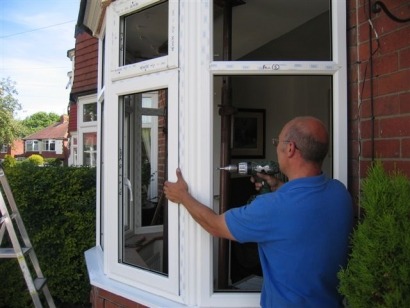
If you have ever had the opportunity to renovate an old house, as my wife and I did, you know that incorporating energy-efficient features can be expensive and time-consuming. Lacking any plumbing or electricity, and with exterior doors and windows missing and insulation totally absent, our Civil War-era house presented some unique challenges. Because our purchase price was low (no one else wanted the house), we were able to insulate, tighten up the structure, and incorporate efficient windows and appliances without breaking the bank.
While our house may have been a unique case, there are tens of thousands of old, abandoned homes scattered across America that are suitable for renovation. Unfortunately, many of these structures are demolished every year due to highway construction and urban renewal projects, and developers often find it simpler to tear down old homes than to bring them up to code with the latest energy-saving devices.
Can anything be done to save these old structures? Builders of Hope founder Nancy Welsh thinks so. Several years ago, Welsh had an idea – what if she could purchase old houses at little or no cost, move them to urban neighborhood settings, and create energy-efficient rehabilitated homes for low-income families who otherwise could not afford to rent or buy? Since then, Welsh’s idea has blossomed into a national organization with many renovated homes and several rejuvenated neighborhoods to its credit.
At the same time, Welsh has diversified the Builders of Hope organization by adding programs aimed at creating green communities, temporary housing for veterans receiving medical care, and jobs for the homeless, ex-offenders, and at-risk youth. Welsh likes to say that Builders of Hope “sustainably revitalizes at-risk communities – one home, one family, one life at a time.”
Durham, North Carolina, duplex before rehabilitation

Same duplex after rehabilitation

Currently, Builders of Hope is dividing its efforts among the following five programs:
Extreme Green Rehabilitation: A patent-pending rehabilitation program covering home assessment, site selection, relocation, construction debris management, and reconstruction using green technologies and materials.
Ecological Communities: The creation of safe, affordable, and energy-efficient neighborhoods for low- to middle-income workers who would otherwise have difficulty finding housing.
Hope Works: Employment and on-the-job training in the field of green construction for the homeless, ex-offenders, and at-risk youth.
Veteran Housing: Rehabilitated housing units close to U.S. Department of Veterans Affairs hospitals and medical facilities that are made available to military veterans and their families at an affordable rent.
Upcycle REO Program: Real estate owned (REO) property (typically held by a bank, government agency, or government loan insurer) that is converted to energy efficient and healthy housing and rented to working and low-income families.
While each rehab is unique, Builders of Hope strives to incorporate green technologies wherever possible. Some typical green features include:
New residents are educated about the green features of their new homes and how to conserve energy. For many middle- and low-income families, struggling to make ends meet, every dollar saved on their utility bills can be put to good use.
To learn more about Builders of Hope, see my feature article in the July/August issue of Solar Today Magazine.
Great article....this does give hope to many.....hope they can keep up with the demand!

